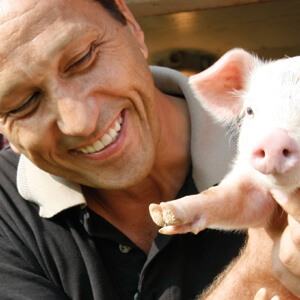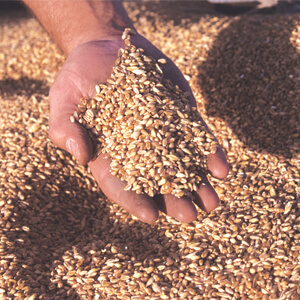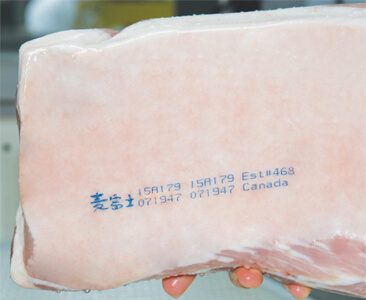Porc Nagano
If there's one thing we're looking for when we buy meat, it's quality. Lucyporc Foods understood it quite well when they introduced their new brand: Nagano Pork. Its mission is to make you enjoy the flavors from here while respecting the best breeding and processing conditions!

A Japanese project
Exporting pork to Japan, why not? Following this opportunity in 1999, Lucyporc Foods, a division of the Robitaille Group, has embarked on this promising journey. In order to meet a high demand from Japan, these entrepreneurs decided to take on new challenges by developing and marketing this unique product, Nagano Pork. Why Nagano? When the brand name was selected, the 1998 Olympics were taking place in Nagano, Japan. At that moment, they had the illumination! Nagano was the perfect name for this new brand of pork.

A proven method
Breeded in Montérégie and Mauricie, Nagano porks are 100 % Quebec-grown. To ensure a high quality of meat, they
have developed a precise food program for their animals made of barley and wheat. All cuts are handmade by one of the 400 employees of Lucyporc Foods. Every week, the processing plant, located in Yamachiche in Mauricie, transform nearly 7,000 porks! The manual cutting and the vacuum packaging of the products increases the conservation period of the products and thus promotes the impeccable quality of Nagano pork.
Interesting fact: all products from Nagano pork have a code that allows you to trace all the stages of transformation. This ingenious process offers the consumer the opportunity to know the exact path between the farm and his plate!

Did you know that a large quantity of Nagano pork produced here is sent directly to Japan?
Initially, this product line was created to respond to the demand of Japanese consumers. Because the time of transport is more than 3 weeks, they have developed a strict preservation procedure and hygiene controls at the factory, which keeps the produce fresh for a period of 50 days.
To each his cut
Nagano meat is distinguished mainly by its more pronounced marbling, its pink flesh, whiter and firmer fat, and its great water retention capacity. These characteristics allow consumers and local chefs to enjoy a meat that is naturally tender and tasty. Surprisingly, cuts of meat will change with the country where the products will be sold. For example, in Japan we will find the lanyard, the flank and the katarosu which is very appreciated by the Japanese. The particularity of this Japanese cut is its rectangular shape which is coated with a layer of fat 10 mm thick and 50 mm wide. In Quebec, many of the Nagano cuts, like pork chops boneless, hotel cut, cutlets, tenderloin and ground pork are the most popular. They are available in IGA supermarkets, in some butcher shops and specialty grocery stores.
To find out more about Nagano Pork cuts and get tasty recipes, visit www.porcnagano.com!